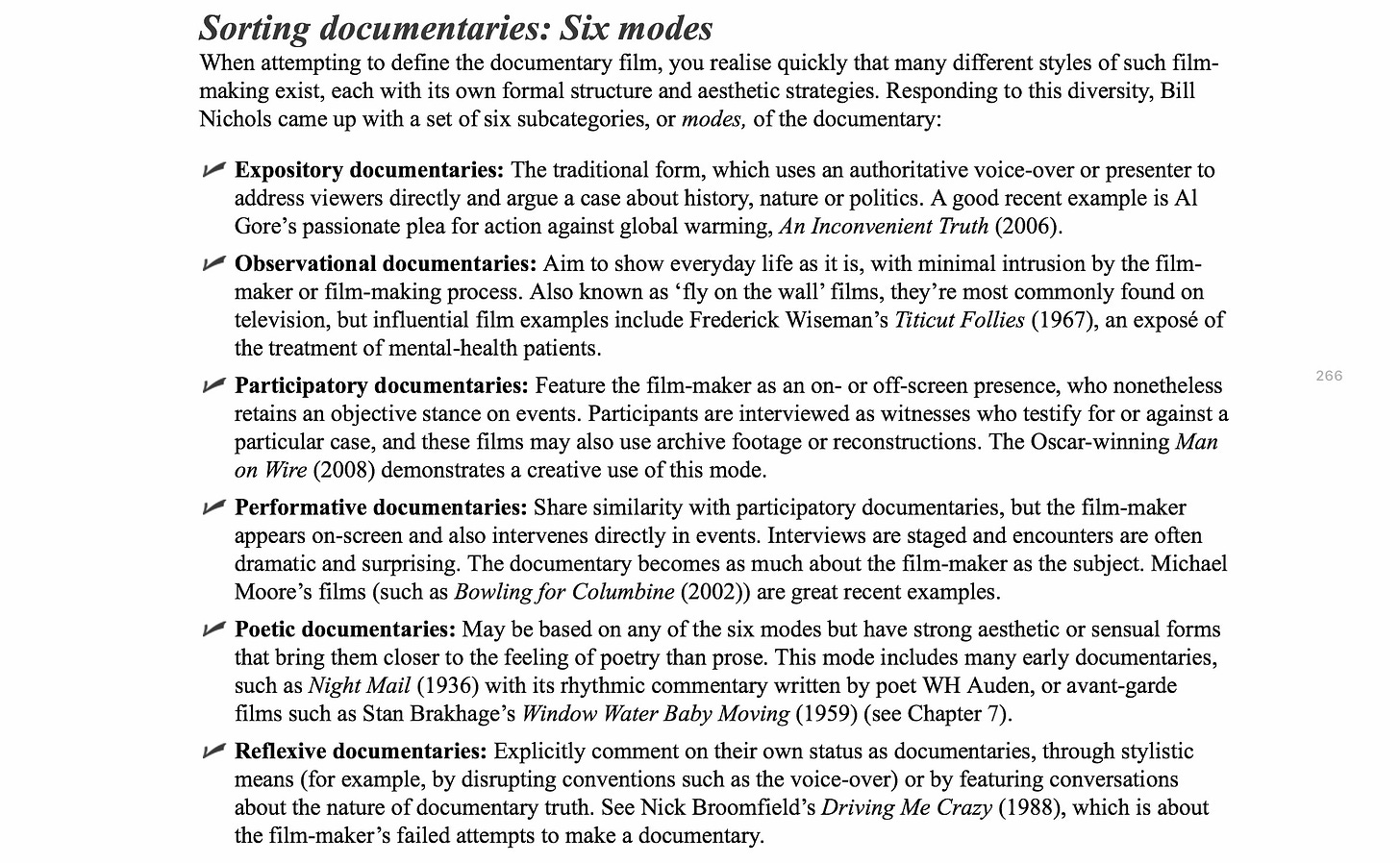Modes of Documentary
Expository Mode
Traditional documentary style that uses a voice over to directly address the viewer and present/argue a case. This style assumes an argument and sticks with it throughout, and can often be emotive or biased.
i.e Blue Planet narrated by David Attenborough.
Observational Mode
These aim to show everyday life with little intrusion to make the viewing experience as realistic as possible. Used typically and perfected in the Cinema Vérité movement in 60s France, and to make the film as natural as possible the director isn’t seen on screen and the characters typically aren’t staged.
i.e Titicut Follies, a 1967 film about the treatment of patients with mental health disorders.
Participatory Mode
Films based on a certain event/person and take and objective stance on it based on the evidence from witnesses and the usage of archive footage. The filmmaker is typically part of the investigation and is often the one communicating with the subjects in interviews.
i.e Man on the Wire, 2008.
Performative Mode
Similar to participatory, but the filmmaker is now more directly involved and investigative making it typically far more subjective and emotional.
i.e Louis Theroux documentaries.
Poetic Mode
Using documentary film as a way to convey truth visually and audibly by using more artistic mediums such as poetry, rhythm and aesthetic in general.
i.e Night Mail, 1936 which contains a rhythmic poem to the chug of the train.
Reflexive Mode
These films are self aware of their status as documentaries and subvert this by conveying a point of view as one of many rather than the objective truth that is typical of documentary filmmaking. The audience are made aware of the makings of the documentary.
i.e Driving Me Crazy, 1988.


